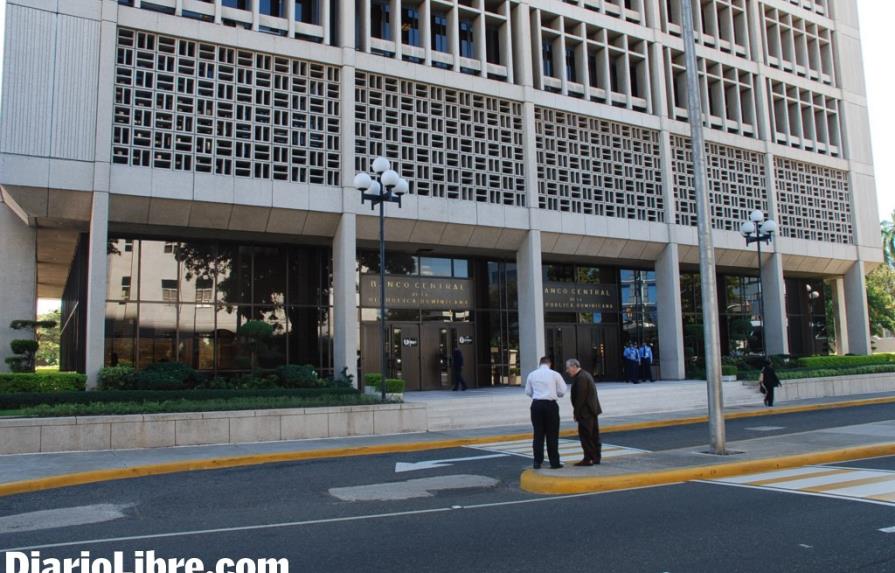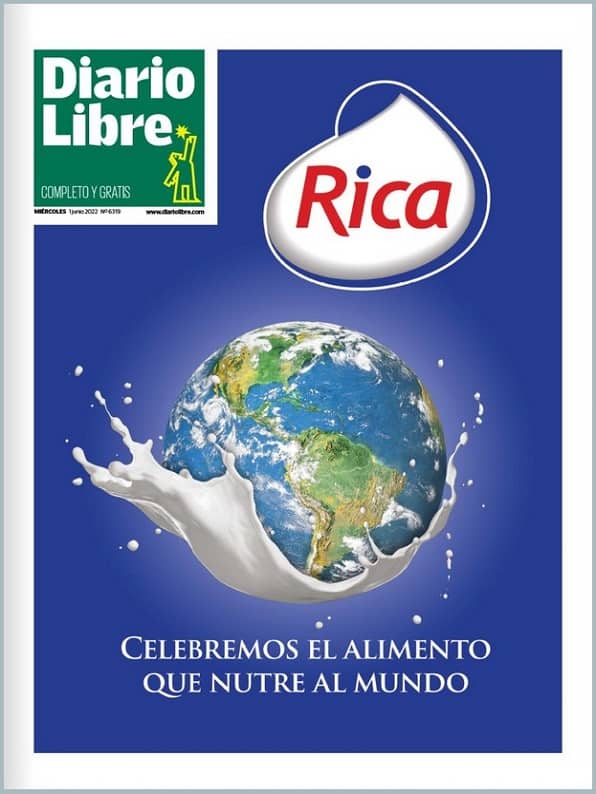Slowly, interest rates take the route towards reduction
In April, "overnight" deposits by banks in the Central Bank go up 19%

SANTO DOMINGO. At 90 days, the active interest rates have gone down 218 basis points, while the passive interest rates on 30 day loans have gone down 87 basis points, according to the average observed as of 21 April, with relation to what had been reported in March.
This tendency reflects the fact that the measures announced by the Central Bank of the Dominican Republic (BCRD), last 29 March, have begun to have an effect, although delayed, on the short-term interest rates of the multi-banks. Nevertheless, the weighted average of borrowing rate, reflects a site increase of six basis points, while the average of the active rates was 80 basis points lower, which points towards the fact that in the medium and longer-term this adjustment is still an ongoing job.
This behavior of the interest rates reflects the adjustment process which is just beginning in the midst of the monetary expansion which entered into effect starting on 1 April. This adjustment happens in the context of the supply and demand, and as payment comes due and banks grant new loans.
"Transmission to the internal structure of the interest rates is not immediate," explains the Association of Commercial Banks of the Dominican Republic (ABA). They add that the interest rates also respond to other factors such as "the liquidity of the banking system, the supply and demand of money, the rate of exchange and the expectations of the future held by the economic agents."
At the end of March, the BCRD implemented within the context of low inflation, a group of measures intended to energize banking credits, and reduce the cost of money, and as a result provide a push to the economy.
On 26 March, the Monetary Board, the governing body of the BCRD, authorized the use of up to RD$10 billion of the legal reserve in order to channel them towards two-year loans and at 6% interest to builders of housing; and at a rate of 8% and a 30 year period to those who acquired new homes.
Likewise, at the monetary policy meeting of March, the BCRD reduced its monetary policy rates (TPM) by 50 basis points, taking it to 5.75%.
Since August 2013 this rate had been maintained by the monetary authorities at 6.25% a year.
The Central Bank also reduced its rates of monetary contraction and expansion to 4.25%, from 4.75% a year and to 7.25% from 7.75% a year, respectively.
In the framework of its inflation goals, the BCRD raises or lowers its monetary policy rate, with the objective of influencing the rates used by the banks to lend among themselves, and in the rates that they apply to their operations of deposits and loans with the public.
The ABA explains that the liberation of the RD$10 billion, for financing low-cost housing, by means of public and private trust funds, "is not immediate,". Those funds will flow towards the economy "in a gradual and measured manner as the projects are being developed and approved," they made clear.
In the meantime, the Central Bank notes that "the passive rates (on deposits) tend to respond first and then the active rates," to the reduction of the monetary policy rates. And they estimate that as of 21 April, this has gone down 6.3% from the 7.08% of March. This is equal to a fall of 78 basis points. The bank explains that a reduction of the monetary policy rate is first seen in the interest rates on short-term loans, such as the case of those that are granted at 90 days, whose interest rates on average have gone down from 13.39% to 11.25%.
Nevertheless, in the case of five-year loans, between March and April the interest rates increased from 15.21% to 15.8%, for an increase of 63 basis points.
Seen by sectors, the interest rates have gone up and have gone down. In the case of commercial credits, the average rate has gone down from 14.47% to 14.02%, a reduction of 45 basis points in 21 days. For the Central Bank, commercial loans constitute "the credit portfolio of the banks," and this "has begun its downward tendency." Interest rates have also gone down in the case of personal loans, going from 21.53% to 20.99%, which is a fall of 54 basis points. However, in the case of mortgage loans or loans for development a slight and paradoxical increase of 14 basis points is seen, going from 12.79% to 12.99%. At least, at first sight "paradoxical," because it was supposed that this is the rate that should go down. "But these results are consistent with what has been observed in other countries given the decisions to cut back the interest rates," says the BCRD.
Bank liquidity
"The banks' liquidity is adequate in order to continue with their normal operations," reports the ABA. The banks closed March with excess reserves. Above what was required, in pesos, it was RD$1.153 billion, and in dollars it was US$79.62 million. This caused the effective rate on deposits in pesos, to be 14.5%, (when what was required is 14.3%), and in dollars, 21.4% (when what was required is 20%). In addition, between 31 March and 17 April that overnight deposits in the Central Bank grew by 19%, in spite of the reduction of the interest rates to 4.25%.
This tendency reflects the fact that the measures announced by the Central Bank of the Dominican Republic (BCRD), last 29 March, have begun to have an effect, although delayed, on the short-term interest rates of the multi-banks. Nevertheless, the weighted average of borrowing rate, reflects a site increase of six basis points, while the average of the active rates was 80 basis points lower, which points towards the fact that in the medium and longer-term this adjustment is still an ongoing job.
This behavior of the interest rates reflects the adjustment process which is just beginning in the midst of the monetary expansion which entered into effect starting on 1 April. This adjustment happens in the context of the supply and demand, and as payment comes due and banks grant new loans.
"Transmission to the internal structure of the interest rates is not immediate," explains the Association of Commercial Banks of the Dominican Republic (ABA). They add that the interest rates also respond to other factors such as "the liquidity of the banking system, the supply and demand of money, the rate of exchange and the expectations of the future held by the economic agents."
At the end of March, the BCRD implemented within the context of low inflation, a group of measures intended to energize banking credits, and reduce the cost of money, and as a result provide a push to the economy.
On 26 March, the Monetary Board, the governing body of the BCRD, authorized the use of up to RD$10 billion of the legal reserve in order to channel them towards two-year loans and at 6% interest to builders of housing; and at a rate of 8% and a 30 year period to those who acquired new homes.
Likewise, at the monetary policy meeting of March, the BCRD reduced its monetary policy rates (TPM) by 50 basis points, taking it to 5.75%.
Since August 2013 this rate had been maintained by the monetary authorities at 6.25% a year.
The Central Bank also reduced its rates of monetary contraction and expansion to 4.25%, from 4.75% a year and to 7.25% from 7.75% a year, respectively.
In the framework of its inflation goals, the BCRD raises or lowers its monetary policy rate, with the objective of influencing the rates used by the banks to lend among themselves, and in the rates that they apply to their operations of deposits and loans with the public.
The ABA explains that the liberation of the RD$10 billion, for financing low-cost housing, by means of public and private trust funds, "is not immediate,". Those funds will flow towards the economy "in a gradual and measured manner as the projects are being developed and approved," they made clear.
In the meantime, the Central Bank notes that "the passive rates (on deposits) tend to respond first and then the active rates," to the reduction of the monetary policy rates. And they estimate that as of 21 April, this has gone down 6.3% from the 7.08% of March. This is equal to a fall of 78 basis points. The bank explains that a reduction of the monetary policy rate is first seen in the interest rates on short-term loans, such as the case of those that are granted at 90 days, whose interest rates on average have gone down from 13.39% to 11.25%.
Nevertheless, in the case of five-year loans, between March and April the interest rates increased from 15.21% to 15.8%, for an increase of 63 basis points.
Seen by sectors, the interest rates have gone up and have gone down. In the case of commercial credits, the average rate has gone down from 14.47% to 14.02%, a reduction of 45 basis points in 21 days. For the Central Bank, commercial loans constitute "the credit portfolio of the banks," and this "has begun its downward tendency." Interest rates have also gone down in the case of personal loans, going from 21.53% to 20.99%, which is a fall of 54 basis points. However, in the case of mortgage loans or loans for development a slight and paradoxical increase of 14 basis points is seen, going from 12.79% to 12.99%. At least, at first sight "paradoxical," because it was supposed that this is the rate that should go down. "But these results are consistent with what has been observed in other countries given the decisions to cut back the interest rates," says the BCRD.
Bank liquidity
"The banks' liquidity is adequate in order to continue with their normal operations," reports the ABA. The banks closed March with excess reserves. Above what was required, in pesos, it was RD$1.153 billion, and in dollars it was US$79.62 million. This caused the effective rate on deposits in pesos, to be 14.5%, (when what was required is 14.3%), and in dollars, 21.4% (when what was required is 20%). In addition, between 31 March and 17 April that overnight deposits in the Central Bank grew by 19%, in spite of the reduction of the interest rates to 4.25%.


 Edwin Ruiz
Edwin Ruiz
 Edwin Ruiz
Edwin Ruiz